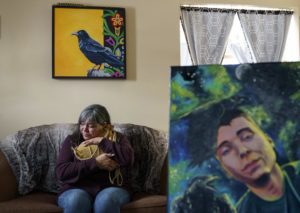Sierra Leone has been dealt a “great loss,” the country’s leader said Thursday, after its Cotton Tree, which served as a symbol of national freedom, was brought down.
It stood for centuries as a towering symbol of freedom, but was brought crashing down this week by torrential rain.
Sierra Leone has been dealt a “great loss,” the country’s leader said Thursday, after its iconic Cotton Tree was felled in the storm.
The giant tree loomed over the capital, Freetown, for about 400 years. At around 230 feet tall and 50 feet wide, its physical stature was surpassed only by its status as a national symbol.
Crowds gathered in the center of the capital to see the wrecked trunk for themselves.
“It was regarded as a symbol of liberty and freedom by early settlers” in the West African country — which was founded by freed American slaves — according to President Julius Maada Bio, who joined the crowds at the site Thursday.
“The Cotton Tree wasn’t just a tree,” Bio tweeted, “it was a connection between the past, present and the future.”
The great shade of the Cotton Tree had offered returning Black freed slaves a resting place and prayer ground when they arrived by boat in the 1700s, the country’s Ministry of Tourism and Cultural Affairs said on its website.
While it stood strong in the face of landslides driven by climate change and a lightning strike, a heavy downpour Wednesday night left nothing of the Cotton Tree but a stump.
It was “damaged beyond repair,” said Zebek, a press agency working with Sierra Leone’s government, “its entire trunk sheared off a few metres above the ground.”
The weight of the loss “is comparable with the 2019 fire that destroyed the Notre Dame cathedral in Paris,” Zebek said.
Freetown’s city structure sprung from the Cotton Tree’s central position, and the tree became a national icon that appeared on bank notes, featured in lullabies and was a stop for royalty.
Queen Elizabeth II visited it in 1961 on a visit marking Sierra Leone’s independence from Britain.
As Freetown transformed into an urban city over time, the Cotton Tree “remained a singular oasis of green,” Zebek said.
It was a shelter not only for the people, but for vultures that served as literary inspirations for novelists like Graham Greene, who likened them to “broken umbrellas.”
Bio said that parts of the tree would be preserved in the National Museum.
The Ministry of Tourism and Cultural Affairs immediately took action to preserve the remaining trunk and urged the public against cutting away parts from the remains.
The government welcomed “public debate on the future use of the site,” Zebek said, and sounded an optimistic note.
“When a tree falls naturally due to extreme weather, a new life springs forward,” Bio said. “Together, we will preserve the legacy of unity, freedom and liberty of our iconic Cotton Tree.”




